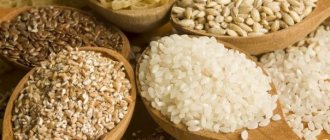When to introduce the first complementary foods
The timing of the introduction of complementary foods is a subject of heated debate among pediatricians. And if in the last century it was recommended to diversify the children's menu at the age of two months, now the deadlines have been revised. Breastfeeding is considered optimal nutrition during the first six months of a baby's life for several reasons:
- supplies vitamins, enzymes and hormones necessary for growth and development;
- promotes the colonization of the intestines with beneficial microflora, which protects the body from infections ;
- the sucking process serves as the basis for the formation of a correct bite;
- creates a close psychological connection between mother and child.
After lengthy discussions, nutritionists from different countries have found a “golden mean” - the optimal age for introducing complementary foods. The recommendations of the European Society of Pediatric Gastroenterologists, Hepatologists and Nutritionists (ESPGHAN) are as follows [1]:
- the desired goal is to maintain breastfeeding until the child is 6 months old;
- the baby must be breastfed for at least the first 17 weeks of life (that is, up to 4 months);
- The first complementary foods should be introduced into the diet no earlier than 4 months, but no later than 6 months.
That is, the ideal time for introducing complementary foods is children's age from 4 to 6 months . Complementary feeding includes all liquid and solid foods, with the exception of infant formula and breast milk. Similar recommendations are followed by experts from the World Health Organization [2], as well as the American Academy of Pediatrics [3]. Russia has adopted the “National Program for Optimizing Feeding of Children in the First Year of Life,” according to which it is also recommended to start complementary feeding at the age of 4-6 months [4].
Table for introducing complementary foods by month when breastfeeding
According to the Russian National Program, if the child has reduced body weight and signs of dyspepsia (stool problems, flatulence), the first complementary feeding during breastfeeding should begin with cereals . The advantages lie with industrially produced baby cereals containing iodine, zinc, iron, and calcium [5]. If you are overweight and prone to constipation, you should give your baby vegetable purees as the first complementary food . They improve intestinal motility and normalize stool.
At the same time, it is important that baby food products meet the highest quality standards, hygiene and safety requirements. Home-cooked dishes are also acceptable. The nutritional plan for children in the first year of life is shown in more detail in Table No. 1 [4]. Each age has its own diet and daily amount of complementary foods. Table No. 1
| Product in g or ml. | 4-6 months | 7 months | 8 months | 9-12 months |
| Vegetable puree | 10-150 | 170 | 180 | 200 |
| Milk porridge | 10-150 | 150 | 180 | 200 |
| Fruit puree | 5-60 | 70 | 80 | 90-100 |
| Fruit juice | 5-60 | 70 | 80 | 90-100 |
| Meat puree | 5-30 | 30 | 50 | 60-70 |
| Cottage cheese | 10-40 | 40 | 40 | 50 |
| Fermented milk drinks (kefir, etc.) | — | — | 200 | 200 |
| Fish puree | — | — | 5-30 | 30-60 |
| Yolk | 1/4 pcs. | 1/2 pcs. | 1/2 pcs. | |
| Cookie | — | 3-5 | 5 | 10-15 |
| Wheat bread | — | — | 5 | 10 |
| Butter | 1-4 | 4 | 5 | 6 |
| Vegetable oil | 1-3 | 5 | 5 | 6 |
It is recommended to include cottage cheese and meat puree in your baby’s diet no earlier than 5 and a half months. Later than others, fermented milk drinks, white bread and fish puree are introduced. The menu of a six-month-old baby should consist mainly of milk porridge and vegetables, pureed fruits, pureed meat, cottage cheese and juices [4].
Vegetable puree
Vegetables are a source of organic acids, iron, potassium and other minerals, dietary fiber, and vitamins.
Certain types of vegetables (carrots, pumpkin, spinach, etc.) are rich in carotene, a precursor of vitamin A.
Vegetable purees are the best option for a baby's first complementary feeding. It is recommended to start with one-component purees from vegetables with delicate fiber (zucchini, cauliflower, pumpkin, broccoli); later other vegetables are introduced into the child’s diet (white cabbage, carrots, potatoes, etc.).
And only six to eight weeks after the baby “gets acquainted” with the first vegetable, combined vegetable complementary foods, consisting of several components, can be introduced.
Rules for introducing complementary foods
Age is not the only guideline for reviewing a baby’s diet. Before introducing your son or daughter to new products, it is necessary to take into account the characteristics of psychomotor development :
- general activity of the child;
- interest in “adult” food;
- ability to swallow pieces of solid food;
- the ability to take new foods from a spoon rather than through a pacifier.
You should not focus on the appearance of teeth - some babies erupt their first teeth too late, and the need for a varied diet arises much earlier.
How to introduce complementary foods correctly:
- At the first stage, introduce your child to new food with a liquid consistency. The volume of the first portion is about 5 ml (g).
- Give the product from a clean teaspoon - at the very tip - to teach the baby to take food with his lips and move it in the mouth.
- Include the next product in your diet only after 1-2 weeks - this time is necessary to adapt to the new food.
- Plan complementary feeding for the first half of the day, so that in the second half you can monitor the body’s reaction (whether an allergy develops, how the stool changes). If there are no adverse reactions, every day you can gradually increase the volume of the product to the recommended amount.
- As you get used to liquid complementary feeding, offer your baby solid food - at about 9-10 months. If your baby refuses to eat food in pieces, try again a little later.
- Don't use too much sugar in your dishes. The baby should experience a variety of taste sensations, including sour and bitter.
Try to develop a positive perception of food in your child. Don't turn feeding into torture. You can offer the same dish 8 to 10 times. If a child refuses complementary feeding for the first time, this does not mean that he does not like the dish. Even those foods that the baby has repeatedly refused can later become favorites. Research shows that it can take up to 15 attempts to form such a habit [2].
Avoiding mistakes
To ensure that the introduction of complementary foods does not become a test for either the baby or the mother, you need to follow some recommendations. The most important thing is to be patient and don’t get too upset if things don’t go according to plan. Each child is individual, as are his taste preferences and needs. • Start complementary feeding if the baby is completely healthy. Contraindications for introducing new products include teething, colds, stress associated with separation or moving, recent or planned vaccinations. • New foods are introduced gradually, starting with half a teaspoon. In the absence of allergies or digestive problems, the next day the amount of product is approximately doubled. Sometimes the introduction of a new product lasts up to a week. Take your time, give your child the opportunity to “taste” this dish. If the baby flatly refuses what is proposed, postpone the acquaintance for at least a week. • Do not force your child to eat. After all, your goal is to introduce your child to new tastes and help him develop proper eating habits. • The best time for the first feeding is after the morning feeding until 12 o'clock, when the baby is already hungry and ready to eat something else. In case something goes wrong, you will know about it during the day, not at night. • If you have a negative reaction to the product, such as an allergy, consult your doctor immediately. Then, in consultation with your doctor, offer this dish after a certain period of time. • Increase the dose gradually to that recommended by your pediatrician. If you don't get it done in a week, don't worry. Listen to your child and act according to the situation. • Always start feeding with complementary foods. Only then offer breast milk or formula. • Stick to a 5-meal-a-day schedule. Feed your baby at the same time every day. • Products offered to the baby must be heat-treated - boiled or steamed. The dish should be at a comfortable temperature – about 37 °C. • Purees and cereals should be of a liquid consistency so that a child who does not yet know how to chew can eat them comfortably. Thicker dishes with lumps and pieces are introduced into the diet around the age of one year, when several teeth are already present. • When preparing foods for complementary feeding, do not use salt, sugar and spices. Also, do not add them to force your child to eat something. Let the baby get used to natural tastes. • Complementary feeding dishes are prepared for one time and in no case are stored in the refrigerator until the next feeding. Everything should be only the first freshness. • If you prefer ready-made baby food, carefully study the top manufacturers, pay special attention to shelf life when purchasing.
When introducing complementary foods, be guided by the data in the tables, which indicate which products, in what quantities and in what months experts recommend giving them.
Features of introducing complementary foods
In the recommendations of Russian pediatricians [4], there are no differences regarding the introduction of complementary foods for bottle-fed and breastfed children. When breastfeeding, the mother should continue to breastfeed the baby according to the same pattern, but in the intervals between main feedings, offer the baby new foods as complementary foods. The same applies to formula milk - for “artificial babies”, milk nutrition should remain the main source of energy, fluid and nutrients. Complementary foods provide only additional nutrients and help the child’s body gradually adapt to adult food.
What features need to be taken into account when creating a “new menu” (according to ESPGHAN recommendations) [1]:
- Offer your baby foods with different tastes, aromas, and textures;
- cow's milk should not be the main food product for children in the first year of life - it contains too little iron;
- whole milk can be added to other children's dishes in small quantities
- give preference to products with a sufficient amount of iron in their composition (meat puree, milk formula);
- Do not add salt or sugar to ready-made children's dishes - let the baby get used to the natural taste of healthy food.
For children with functional digestive disorders, pediatricians recommend later introduction of juices. They contain large amounts of organic acids, which irritate the gastric mucosa and can aggravate eating disorders [6]. In the case of sweet dishes, it is better to give the baby breastfeeding (or formula) first, and then offer complementary foods. If you use an unsweetened product as complementary food, you can start giving it before breastfeeding.
How to prepare porridge for baby feeding
Cereal complementary foods can be introduced in the form of porridges prepared at home, instant instant powders, and also in canned form. Let's consider all the options in more detail. Home cooking
To prepare porridge for a child, you can use special baby food flour made from the appropriate cereal.
But such a product cannot always be found in a regular supermarket. A more affordable option is fresh, good quality cereal. Before cooking, it must be cleaned of possible debris and rinsed thoroughly. The following are possible options: • Method 1.
Grind the cereal in a coffee grinder to a powder.
Place the product in cold or boiling water and cook over low heat until tender. • Method 2.
Cook porridge from unground cereals.
Cool to 37 degrees and grind with a blender. You can add a little breast milk or formula (literally 20–30 ml) to the cooled porridge. This will improve its taste and make it even more nutritious. Ready-made porridges
These are specialized products for baby food that help mothers save time on preparing porridge in the traditional way, but at the same time take care of a high-quality, nutritious and varied diet for the baby.
IMPORTANT! The Bebi Premium line presents the entire palette of cereals recommended for first complementary feeding. These are dairy-free and milk porridges, monocomponent and multi-grain, with fruit, berry, vegetable, and creamy components. They: • are made from certified raw materials; • have a balanced composition; • additionally enriched with prebiotics.
Freshly boiled water is used to prepare porridge. The optimal proportions of liquid and powder for the child’s age are usually indicated on the product box. Porridge in jars
When the baby is already well acquainted with porridge and other types of complementary foods, you can give him canned foods in jars as a second complementary food. Such products contain cereals with fruit or vegetable puree, with the addition of milk. The composition does not contain salt or sugar. This is a convenient way to provide your baby with the necessary nutrition during trips and travels.
Types of complementary foods
Even with full breastfeeding, a six-month-old baby already needs a varied diet. It is recommended to include the following types of complementary foods in children's diets:
- plant foods - vegetables, fruits, cereals;
- protein foods - meat and fish puree;
- cereals – porridge, flour products (bread, cookies).
It is necessary to introduce complementary foods of each type in accordance with the table above - depending on the age of the baby.
Complementary food from vegetables
According to the recommendations of the Russian National Program for Optimizing the Feeding of Children in the First Year of Life [4], the introduction of vegetable complementary foods always begins with hypoallergenic fruits. This group includes:
- zucchini;
- broccoli;
- cauliflower;
- pumpkin.
Due to the small amount of natural dyes, they are well tolerated by the baby's body and rarely cause allergic reactions. All vegetables intended for the first feeding are served in the form of puree. But ESPGHAN experts do not recommend feeding your baby exclusively pureed foods for a long time [1]. Already at the age of 8 months, children can be given solid food in pieces. This will contribute to the proper development of the maxillofacial apparatus and the formation of a healthy bite.
It is recommended to start the first week of vegetable complementary feeding with zucchini puree. For the first dose, one teaspoon will be enough - this is about 8 g. Then the portion is increased to 150 g per day. On the fourth day, you can add a third of a teaspoon of vegetable oil to the puree.
In the second week, the child can be introduced to broccoli puree according to the same scheme - starting with a teaspoon and increasing to the daily norm of 150 g. It is better to give an already familiar dish (zucchini) first, and then a new product (broccoli).
For the third week, you can plan cauliflower puree, starting complementary feeding with 8 g. Alternate the dish with other types of puree - zucchini and broccoli, gradually increasing the volume of new food. Pumpkin puree is added to the baby’s menu a little later - in the eighth week. 5 days after the introduction of pumpkin, you can start mixing the mass with sunflower oil - 1 teaspoon per 1 serving. If there is no allergy, by the end of the eighth week the daily volume of pumpkin puree is increased to 150 g.
Feeding with cereals
Porridge can be as complete a complementary feeding dish as vegetable puree, especially if the child is not gaining weight. Recommendations for introducing cereal dishes into your baby’s diet:
- milk porridges are preferable due to their high nutritional value, but are not suitable for infants with lactase deficiency;
- for celiac disease (cereal protein intolerance), preference is given to gluten-free cereals - rice, buckwheat, corn;
- Wheat, oatmeal, semolina, muesli with cocoa additives, oatmeal and instant cookies remain prohibited for celiac disease.
Milk porridges can be introduced as early as 4 months of age (see Table 1). If you started complementary feeding with vegetable puree, it is better to offer your child cereals in the fourth week of complementary feeding according to the following scheme:
- Week No. 4 – 8 g of buckwheat porridge on the first day, increasing to 150 g by the end of the week. It is allowed to add from a third to a half teaspoon of butter.
- Week No. 5-6 – introduce 8 g of rice porridge, alternating it with buckwheat. By the end of the week, your baby can eat up to 150 g of rice with butter per day.
- Week No. 7 – try offering your child corn porridge according to the same scheme. The first portion is 8 g, the norm by the end of the week is 150 g.
- Over the next 2 weeks, alternate rice, buckwheat and corn porridge. And on the tenth, add oatmeal, following the standard scheme - starting with one small spoon. Mashed potatoes or porridges are used alternately, combined with other dishes if tolerated well.
Fruit puree
Fruit puree is allowed to be included in the infant’s menu starting from 4 months of age (see Table 1). The volume of the first “introductory” portion should not exceed 5 ml. But parents should remember that young children can develop allergies to fruits - as the first manifestations of hypersensitivity to tree pollen. Therefore, the introduction of juices should be postponed until six months of age. As the first fruit complementary food, it is better to use puree from light pears or apples [7]. Apple or pear puree can be alternated with vegetable dishes and cereals. If well tolerated, once the child reaches the age of 8 months, the daily intake of fruit puree can be increased to 80 g.
Introducing meat
To maintain normal levels of iron in the blood, the child’s diet must contain meat products in the form of puree. The Russian National Program allows the introduction of meat purees into children's diets from 5.5 months. The volume of the first portion should not exceed 5 grams. Gradually, the daily intake is increased to the recommended 100 g closer to one year of age. Home-cooked boiled meat is allowed to be used along with industrially produced meat purees. But in this case, the daily portion of the meat product is reduced by approximately 2 times [4]. The safest types of meat for a baby's health are:
- rabbit;
- turkey;
- chicken;
- veal;
- lean beef.
It is better to combine meat dishes with vegetable products - this improves the absorption of iron.
Other types of complementary foods
For a long time, the issue of early inclusion of juices in children's diets remained controversial. The potential danger of juices is associated with the high content of fruit acids and natural sugars. Studies [8] have shown that early introduction of juices into complementary foods (before 4 months) is fraught with the development of diabetes mellitus. Pediatricians also do not recommend exceeding the daily intake of juices due to the risk of excess body weight. 6 months is the optimal age for introducing a small family member to fruit juices.
How to introduce first complementary foods with other products:
- Fermented milk drinks (kefir, yogurt) - after 8 months in a volume of about 200 ml per day.
- Low-fat children's cottage cheese - no earlier than 5.5 months in the amount of 10 g. For one-year-old children, the norm is 50 g per day.
- Egg yolk – after 7 months, start with a quarter of the yolk. At the age of 8-12 months, the portion is doubled.
- Fish puree - from 8 months, is included in the baby’s menu twice a week, replacing meat puree with it.
Complementary foods contain only 30% of the daily fluid intake. Therefore, a child’s correct diet must include water - you can give your baby special baby water, boiled or purified. The daily norm is 150-200 ml - the mother can give liquid between main feedings.
What to do if you have an allergy to complementary foods
Food allergies in infants most often develop to protein foods and are observed precisely during the period of intensive introduction of complementary foods.
You can suspect that your baby has an allergy based on the following symptoms:
- skin rashes;
- digestive disorders - vomiting, diarrhea, abdominal pain, bloating;
- mucus and blood in the stool [10].
To identify the allergen, pediatricians advise mothers to introduce the first complementary foods in stages - each product separately, observing the child’s reaction.
If observations have shown an allergy to cow's milk protein , the diet is structured according to the following scheme:
- Whole milk and dairy products (cottage cheese, kefir, yogurt) are completely excluded from the baby’s menu;
- avoid milk from other animals (goat, sheep), as well as beef - these products can cause cross-allergic reactions;
- when breastfeeding, the mother should also receive milk;
- For mixed and artificial feeding, infant formulas based on highly hydrolyzed protein or amino acids are used.
For children who already suffer from allergies or are at risk, it is recommended to use products with proven hypoallergenicity for complementary feeding [11]:
- juices, apple and pear purees;
- vegetable purees from cauliflower, zucchini and broccoli;
- dairy-free rice and buckwheat porridges;
- puree from rabbit and turkey meat.
At the first signs of a food allergy, it is necessary to discontinue the complementary food product, after consumption of which an undesirable reaction occurred. In severe cases, when exclusion of the suspected allergen does not help solve the problem, a doctor's consultation is necessary. If the allergy significantly impairs the infant's health and quality of life, pharmacotherapy may be required. Only a doctor has the right to prescribe medications.
How to introduce a new dish
The 2nd dish (cauliflower) must be added to what has already been introduced. That is, 5 tsp. zucchini and 1 tsp. cauliflower. On a “fasting day” you can give 5 tsp. zucchini, but discard the cabbage and observe. As a result, you will give your baby 5 tsp. zucchini and 5 tsp. cauliflower.
Then you can introduce the 3rd dish - broccoli - and then other vegetables. Once the child is familiar with different vegetables, vegetable mixtures can be introduced.
If you want to feed your child home-cooked vegetables, then note that it is best to cook the vegetables in a double boiler. This way you can preserve vitamins and microelements.
What products should not be used when introducing complementary foods?
, foods that can provoke severe allergic reactions pose a danger Most often, allergies in childhood are caused by:
- chicken eggs;
- whole cow's milk;
- soy products;
- peanut;
- wheat;
- fish;
- seafood [9].
But some products from this list are allowed even in infancy - eggs, fish and cow's milk. They are introduced into the diet with extreme caution:
- egg whites are not used - only the yolk, starting from 7 months;
- cow's milk - closely monitoring the general condition of the baby;
- fish puree - no earlier than 8 months of age.
In the first year of life the following is also prohibited:
- sweets, confectionery and baked goods;
- food with a high salt content (pickles, nuts, salted straws, crackers);
- fruits and berries in red and orange shades;
- foods that cause increased gas formation in the intestines - grapes, legumes, yeast baked goods, rye bread;
- mushrooms;
- honey;
- fatty meat - pork, lamb, duck and goose.
These products are dangerous not only due to allergic reactions. They are poorly digested and not absorbed by the child’s body, overloading the liver and kidneys. Bloating, bowel disorders and rashes are not a complete list of problems that can be caused by improper baby food. When building a baby’s diet, be guided by the recommendations of pediatricians and individual characteristics. Periods of seasonal infections, underweight, chronic constipation or diarrhea will be good reasons for adjusting the complementary feeding regimen from Table No. 1.
References: 1. Agostoni C, Decsi T, Fewtrell M, Goulet O, Kolacek S, Koletzko B, Michaelsen KF, Moreno L, Puntis J, Rigo J, Shamir R, Szajewska H, Turck D, van Goudoever J. Complementary feeding: commentary ESPGHAN Nutrition Committee. 2008; 46(1):99–110. 703 2.Michaelsen KF, Weaver L, Branca F, Robertson A. Feeding and nutrition of infants and young children. WHO regional publications. European series. 2003;87:368. 3. Section on Breastfeeding of the American Academy of Pediatrics. Breastfeeding and drinking breast milk. Pediatrics. 2005; 115:496–506. 4. National program to optimize the feeding of children in the first year of life in the Russian Federation. M.: Union of Pediatricians of Russia. 2011. 68 p. 5. Skvortsova V.A., Borovik T.E., Netrebenko O.K., Lukoyanova O.L., Zvonkova N.G., Mayansky N.A., Kopyltsova E.A., Melnichuk O.S. Scientific substantiation of the scheme for introducing complementary feeding set out in the “National Program for Optimizing Feeding of Children of the First Year of Life in the Russian Federation.” Part 1. Issues of modern pediatrics. 2011;10(6):128–136. 6. Sorvacheva T.N., Gordeeva E.A., Anikieva E.N. Lure. From regulations to an individual approach. Issues of modern pediatrics. 2011;10(5):45–48. 7. Makarova S.G., Vishneva E.A., Alekseeva A.A. Recommendations for introducing complementary foods to patients with food allergies and children at risk: what and when? Pediatric pharmacology. 2014;11(5):45–51. 8. Frederiksen B, Kroehl M, Lamb MM, Seifert J, Barriga K, Eisenbarth GS, Rewers M, Norris JM. Infant susceptibility to developing type 1 diabetes mellitus: The Autoimmune Diabetes in the Young Study (DAISY). JAMA Pediatr. 2013;167(9):808–815. 9. Baranov A. A., Namazova-Baranova L. S., Borovik T. E., Makarova S. G., Yatsyk G. V., Skvortsova V. A., Turti T. V., Vishneva E. A. ., Alekseeva A. A., Roslavtseva E. A., Zvonkova N. G., Lukoyanova O. L., Snovskaya M. A. Food allergy. Ed. A. A. Baranova, L. S. Namazova-Baranova, T. E. Borovik, S. G. Makarova. Ser. "Childhood diseases from A to Z." Moscow. 2013. 10. Muraro A., Werfel T., Hoffmann-Sommergruber K., Roberts G., Beyer K., Bindslev-Jensen C., Cardona V., Dubois A., duToit G., Eigenmann P., Fernandez Rivas M., Halken S., Hickstein L., Host A., Knol E., Lack G., Marchisotto MJ, Niggemann B., Nwaru BI, Papadopoulos NG, Poulsen LK, Santos AF, Skypala I., Schoepfer A ., Van Ree R., Venter C., Worm M., Vlieg-Boerstra B., Panesar S., de Silva D., Soares-Weiser K., Sheikh A., Ballmer-Weber BK, Nilsson C., de Jong NW, Akdis CA EAACI Food allergy and anaphylaxis. Guidelines. Diagnosis and treatment of food allergies. Allergy. 2014; 69:1008–1025. 11. Turti T.V., Makarova S.G., Zimina E.P. Prevention of allergies in children during the period of introducing complementary foods (to help the practitioner). Question let's modernize Pediatrics 2014; 13(6):512–556.
Which porridge should I choose?
When introducing grain complementary foods, it is recommended to adhere to certain principles for choosing porridge.
- Mono-component porridge (from one grain, without adding fruit).
- Gluten-free (does not contain gluten/gluten, which is a strong allergen).
- Dairy-free porridge, because... Pure animal milk is not recommended for children under one and a half to two years of age. Gluten is found in all cereals except buckwheat, rice and corn. But corn is recommended for inclusion in a child’s menu no earlier than the fifth month.
- It is preferable to choose porridge with an adapted milk formula, which is very nutritious and provides a smoother transition to food with a new texture.
- The best weaning cereals should not contain crystalline sugar (a potential allergen) and should be sweet and tasty due to the raw materials used, and not added sugar, fructose or maltodextrin.











